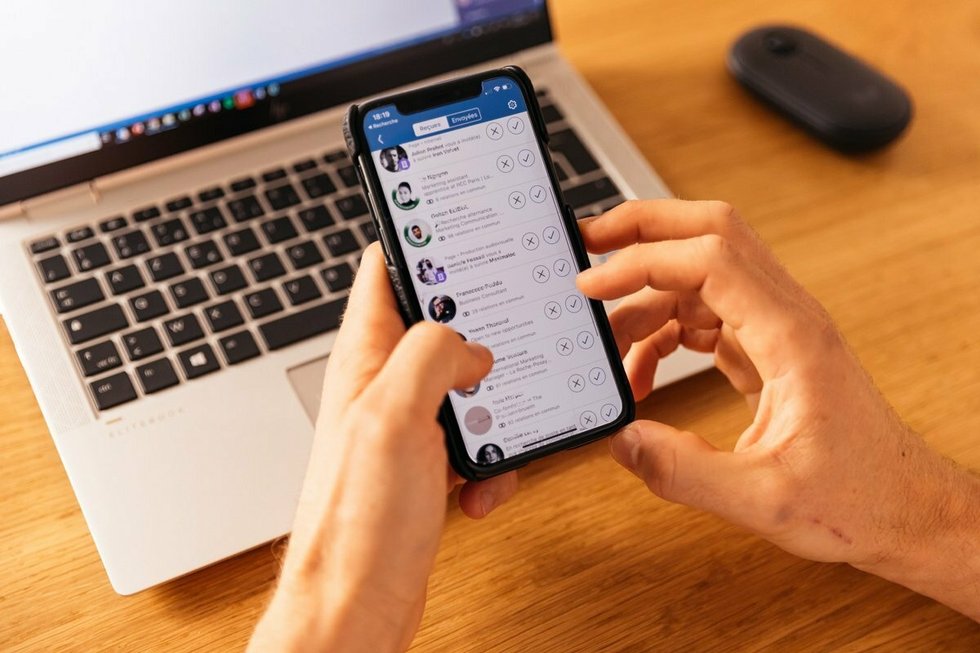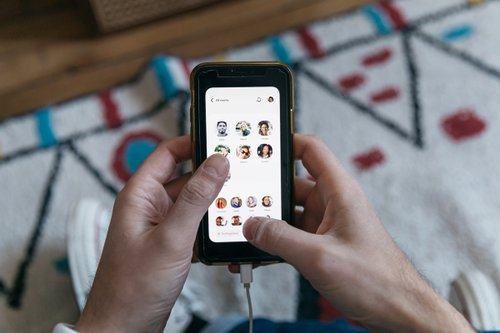LinkedIn: Should you accept every invitation to connect?
18. 9. 2020 - aktualizované 21. 3. 2024
4 min.


Journaliste indépendante.
In life, there are those who pull out their business cards at the drop of a hat, who talk to strangers in a lift, and accept their boss’s friend request on Facebook. Then there are the others who take a more considered approach to social media.
When it is used well, LinkedIn can be a goldmine of professional opportunities. So it’s worth deciding which kind of networking method is best for you. Ask yourself: Do I want to say yes to every connection request I receive or should I be picky? Are you more like an open bar or an exclusive club? Should you have a strict set of rules or just see how you feel at the time? Here is a quick outline of some of the strategies you could use and some of the questions you should ask yourself before choosing which side you are on.
From open bar to the private club: four possible approaches to using LinkedIn
The open bar strategy
This one means literally accepting everyone who wants to connect and rejecting no one. They are all welcome: your ex-colleagues, old college friends you haven’t seen for 10 years, freelancers who are trying to sell you their a-maz-ing ebook on whatever subject is trending–and even that person with a blurry profile picture who doesn’t even speak the same language as you.
This is generally how people start out on LinkedIn because a profile with fewer than 100-150 connections can seem a little odd and doesn’t inspire much confidence. So it’s tempting to accept all invitations initially so that you can build up your numbers. Once you have done so, however, unless you are part of a profession that involves having large numbers of contacts or you are selling something, you risk watering down the quality of your network if you continue to say yes to everyone. Worse still, you might end up looking a bit foolish if a colleague comes up to you and says: “I see that you know so-and-so. Could you introduce me to them?” Awkward.
The spring-clean approach
This approach involves acting just like a teenager who tries to hide stuff under their bed for a while before giving in to the fact that they should just clean their room. You say yes to every request that you get, but then you have a bit of a spring clean on a regular basis, and get rid of the people who do not seem relevant to your network.
This way, you don’t hurt anyone’s ego by rejecting their request and you still get to have a relevant network at the same time. This method can be quite time-consuming, however. Having a big clear-out means going back into every single profile and trying to figure out if it is worth staying connected or not. That takes effort and is not very convenient.
The security guard approach
“Are those sneakers? You can’t come in!” With this approach your selection is made at the door and is based on certain criteria: which sector they are from, whether they hold the same kind of position as you, whether they have the same kind of hobbies as you, or even whether they have a profile picture or not.
You sort the wheat from the chaff and say yes only to those who you think are relevant. Fake profiles and those who probably have nothing to offer do not get a look-in. Sometimes people send a message with their request, specifying why they are getting in touch–perhaps they would like some help, some contact details or to work together. When this happens, it makes it much quicker (and easier) for you to decide and to have an appropriate network right from the start. Otherwise, you have to spend a few minutes looking at every single profile before accepting or declining their invitation. This level of care ensures that your LinkedIn network is of a high quality. Just be careful, however, that you do not miss the boat from time to time on possible job offers, a new contact, or a new interest.
The exclusive business club approach
When you use this method, your aim is to have a small, exclusive list of contacts. You say yes to people who are part of your close professional circle, your associates, your counterparts, and maybe a few random people who have a proven mutual interest. Basically, you connect with those you have already met or will meet soon.
In a Harvard Business Review article, Alexandra Samuel, the author of Work Smarter with Social Media, suggests using the “favor test”. Notably: would you do this person a favor or would you ask them to do a favor for you? This could include asking them to introduce you to someone in their inner circle, attending one of their webinars, or asking you to publicly support a project that they feel strongly about. If the answer is yes, say yes; if not say next. This strategy allows you to develop a really strong network that you can count on. Nevertheless, you might miss out on one of the main virtues behind social networks: broadening your horizons and opening yourself to new ideas, people and opportunities.
So why are you on LinkedIn anyway?
As you can see, there is no foolproof strategy. Looking at your profession, your career path, and how much time you have to spare will help you to determine which one suits your needs.
If you define your objectives and priorities, you will be able to choose the most appropriate approach. Are you looking for a new career opportunity? Then you should say yes to recruiters and employees of companies you would like to join. Would you like to be at the forefront of your sector or profession? Say yes to experts and influencers in your field as well as to your counterparts in other companies. Would you like to get your or your company’s products out there? Then say yes to anyone who is part of your core target market or audience.
LinkedIn is your professional shopfront. Take some time to think about what you are looking for, so that you can present a coherent profile. And make sure you don’t just say yes left, right and center, like an Instagrammer looking for more followers. This is the place to show how professional you are.
Translated by Mildred Dauvin
Photo: Welcome to the Jungle
Follow Welcome to the Jungle on Facebook, LinkedIn, and Instagram, and subscribe to our newsletter to get our latest articles every day!

Viac inšpirácie: Networking

Networking with social anxiety: 5 workers share their tips for dealing with it
For those with social anxiety, networking can feel impossible. See tips from real workers on how to step outside your comfort zone.
19. 2. 2024

Should I share my life on social media? Our personal branding expert weighs in
In our Insta-globalized age, broadcasting your life online can land you a dream job — or land you in trouble...
07. 9. 2023

How to get on the radar of people you admire
If you get yourself noticed by the right people and make a good impression, there’s a chance they will think of you when an opportunity opens up...
10. 3. 2022

Inside Clubhouse: the invite-only app changing the way we network
This invite-only networking app has social media buzzing. So how does it work- and how can it help your career?
24. 3. 2021

How real can we be on LinkedIn?
Photo dumps and live-streaming may encourage authenticity, but when it comes to professional networking, how much can we really share?
10. 12. 2020
Novinky, ktoré to vyriešia
Chcete držať krok s najnovšími článkami? Dvakrát týždenne môžete do svojej poštovej schránky dostávať zaujímavé príbehy, ponuky na práce a ďalšie tipy.

Hľadáte svoju ďalšiu pracovnú príležitosť?
Viac ako 200 000 kandidátov našlo prácu s Welcome to the Jungle
Preskúmať pracovné miesta